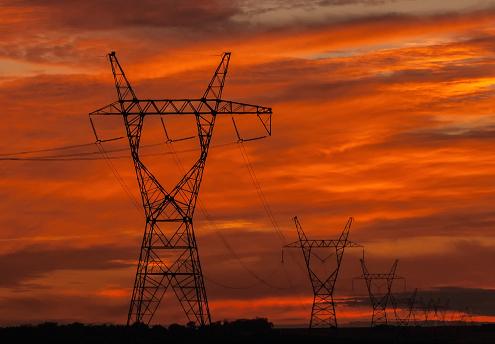This posting presents the abstract and introduction of the 19-page report from the Center for Rural Affairs in Lyons, Nebraska.
Abstract
Several advocates and organizations have examined the need for improved electric transmission in the United States. However, few advocates have formally acknowledged the clash that arises between communities and developers throughout the siting, routing, and construction process. In this paper, local media sources were gathered from several states, focusing on transmission projects and the

Several advocates and organizations have examined the need for improved electric transmission in the United States.
reactions of community members to those projects. Analysis of these sources identified six common issues that surround transmission development in each case: agriculture, conservation, health, eminent domain, need, and fairness. After identifying these issues and their causes, this paper proposes a set of solutions using existing developer practices and current state policy as a basis. Chief among these suggestions is increased communication between communities, landowners, and developers; and employing feedback to change regulatory policy governing the siting, routing, and construction of transmission projects.
Introduction
The nation’s most abundant wind resources reside in the remote regions of the Upper Midwest and Great Plains. Residents of these areas routinely enjoy the benefits of wind production in the form of lease payments, jobs, economic development, and tax revenue. But these same lightly populated communities demand only a small amount of electricity, making it imperative that a new generation of transmission infrastructure be put in place to move this energy from where it’s produced to where it’s needed most. Historically transmission lines were built primarily to serve population. Because the Upper Midwest and Great Plains feature low population densities, large amounts of transmission infrastructure was not needed. But today that’s changed. In 2012 the United States installed more than 13 gigawatts (GW) of new wind projects, qualifying this technology as the largest source of new electricity generation capacity nationwide (Woody, 2013). At the same time, investments in transmission infrastructure continue to lag, remaining the single biggest impediment to further industry growth.
Despite its importance to a thriving wind industry, and in turn thriving rural communities, local citizens often oppose newly announced transmission projects. Every community and landowner holds a different set of concerns, primarily focused on the practices of transmission developers, but threads can be identified. Identification of these commonalities can help utilities, community members, and advocates all more efficiently navigate the difficult process of siting and approving proposed lines, resulting in projects that meet the needs of all involved. For the full report: http://files.cfra.org/pdf/Energy-From-the-Ground-Up.pdf
Center for Rural Affairs
information@cfra.org
Filed Under: News




